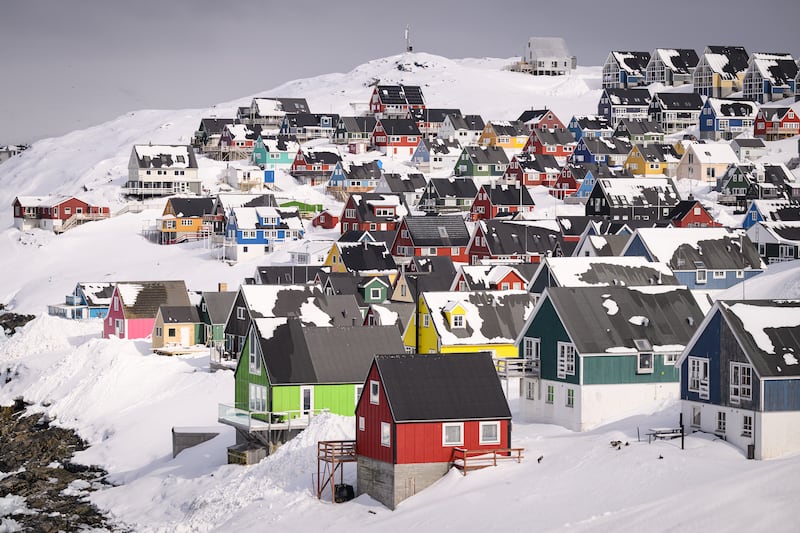In the end, war ends – temporarily. People live side by side – for a while. Reconciliation is replaced by amnesia, denial, edited histories, fantasy, tourism and unresolved tensions. As war rages in Gaza and Ukraine, I have come to the Balkans with my son.
Our tour guide in Dubrovnik is keen to show us the architecture of this Unesco World Heritage Centre. We climb countless steps for the highest view – a dizzying array of battlements, domes and terracotta roof tiles. We learn that the walls of the city are slanted so that cannon balls would bounce off them back in the days when the Ottomans were attacking.
This, however, was no defence against the Yugoslav People’s Army, who killed more than 300 Croatian citizens and defenders and destroyed thousands of buildings during the bombardment of the city in 1991-1992. The tour guide is proud of how the city has been restored. There is, however, no mention of the second World War or of the notorious Ustase or of attacks on Bosnian Muslims by Bosnian Croats.
For most tourists, the important history of Dubrovnik is Game of Thrones. We take another tour and visit all the key sites; I stand where Aidan Gillen once stood as Lord Baelish.
At the border-crossing into Bosnia-Herzegovina, the border guard says “Bambie Thug” when he sees my son’s Irish passport. I make a mental note about the importance of celebrating differences.
You can feel real history everywhere in Mostar, where more than 2,000 people were killed between 1992 and 1994. Many buildings are pockmarked with bullet holes; many houses, destroyed during the war, remain in ruins. In the main mosque in Mostar, the imam’s singing of the Koran is like sean-nós. The mosque was destroyed during the siege of Mostar – and subsequently rebuilt.
Next to the mosque is the Museum of War and Genocide Victims. On display are photographs of mass burials, instruments of torture, personal effects of the dead, testimonies of the tortured – nearly all Bosnian Muslims. A screen shows grainy footage of a UN officer, choking with disgust, as he questions men in a car about the latest atrocity.
Visitors to the museum are invited to write comments on Post-its and stick them on a wall. They say things such as “Stop the genocide in Gaza”; others say: “Stop the war in Ukraine”, “We all sleep under the one sky”, “The tragedy of history is repetition”.
A huge, illuminated cross on a nearby hilltop eerily overlooks Mostar as darkness falls. Medjugorje is 38km from here.
The facade of a deserted building that once functioned as a maternity hospital during the siege of Sarajevo (1992-1996), during which more than 10,000 were killed, is badly damaged from sniper and artillery attacks. On my iPhone I read that Al-Awda hospital in Gaza is under siege again – with mothers and newborn babies trapped inside.
In a city more divided than Belfast ever was, the mingling of church bells and the chanting of the Koran from a loudspeaker, a stone’s throw from where Archduke Franz Ferdinand was assassinated in June 1914, sounds like how things should be in a world enriched by the differences between us.
The sign on the building says: “Headquarters, Dutch Battalion, UNPROFOR 1994-1995. Srebrenica genocide – the failure of the international community.”
The repurposed former UN command centre now houses the Srebrenica Memorial Museum for Victims of the 1995 Genocide; the Memorial Cemetery is just across the road. In July 1995 Bosnian Serb forces massacred 8,372 Bosnian Muslim men and boys. The UN is due to pass a resolution to recognise July 11th as an “International Day of Reflection and Commemoration of the 1995 Genocide in Srebrenica” – but tensions are running high as Serbian and Bosnian Serb leaders continue to speak out against the resolution.
Next to the white, polished marble gravestone in President Josip Broz Tito’s mausoleum in Belgrade are a collection of cut-up bronze fragments of a statue of the former Yugoslav leader. Rescued from being melted down, the fragments seem to symbolise the ultimate break-up of Tito’s communist regime in which differences were suppressed. A notice on the wall says: “During his rule, many problems in the country remained unresolved, especially interethnic issues, which mostly influenced the later disintegration of Socialist Yugoslavia.”
On the way to the airport, we pass the partly destroyed remains of buildings that were bombed by Nato in 1999 to bring an end to the Yugoslav war against Kosovo in which more than 10,000 Kosovan Albanians were killed. The F-word followed by Nato is spray-painted on a nearby wall.
Why do we kill each other over the small differences between us? Why don’t we learn from history? Why can’t we just celebrate our differences? In the future, will visitors to Rafah and Mariupol ask the same things?
- Sign up for push alerts and have the best news, analysis and comment delivered directly to your phone
- Find The Irish Times on WhatsApp and stay up to date
- Our In The News podcast is now published daily – Find the latest episode here



















